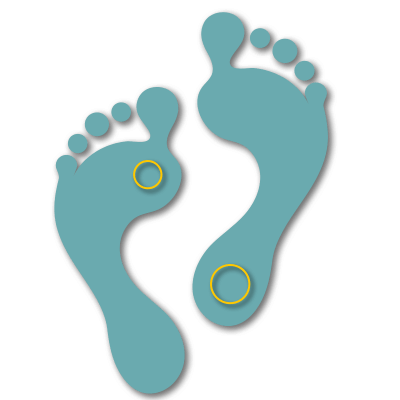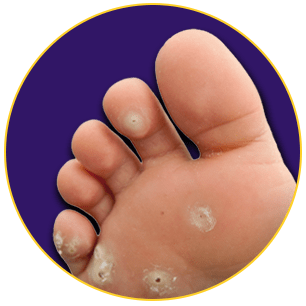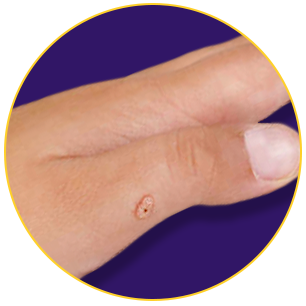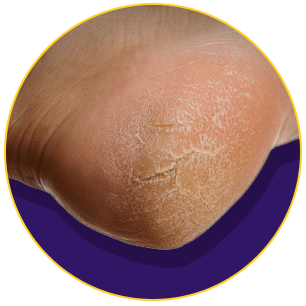What are Verrucas
and Warts?
Verrucas and warts are small, rough lumps of skin that are caused by the Papilloma virus (called HPV). They vary in size from as small as 1mm to over 1cm. On the foot, a wart is called a verruca or plantar wart.
Verrucas are circular, feel rough and protrude just above the skin surface. They are located where there is pressure on the foot so are often found underneath the big toe, the ball of the foot, or on the heel. They can be isolated or be in small clusters. While not normally painful, they can be if they press on a sensitive part of the foot.
Corns and calluses are also rough areas of skin but unlike warts and verrucas are caused by ill fitting shoes.







